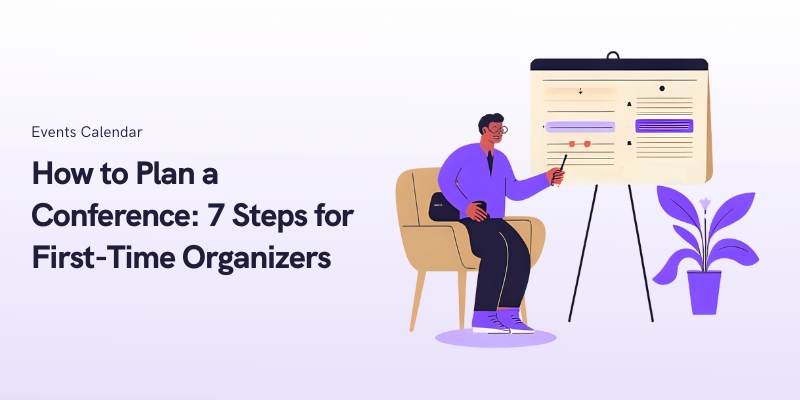
How to Plan a Conference: 7 Steps for First-Time Organizers
Every successful event organizer started exactly where you are now.
Conferences are powerful catalysts for connection, learning, and growth—but without structure, details slip through cracks.
A forgotten contract, an under-budgeted coffee break, or a speaker’s last-minute cancellation can derail months of work.
That’s why embracing a step-by-step framework is non-negotiable.
It transforms ambiguity into achievable tasks, ensuring you cover everything from event budgeting and venue selection to speaker management and attendee engagement.
As the event industry rapidly evolves, staying informed about the latest event planning trends for 2025 is essential for organizers looking to create impactful experiences that resonate with modern audiences.
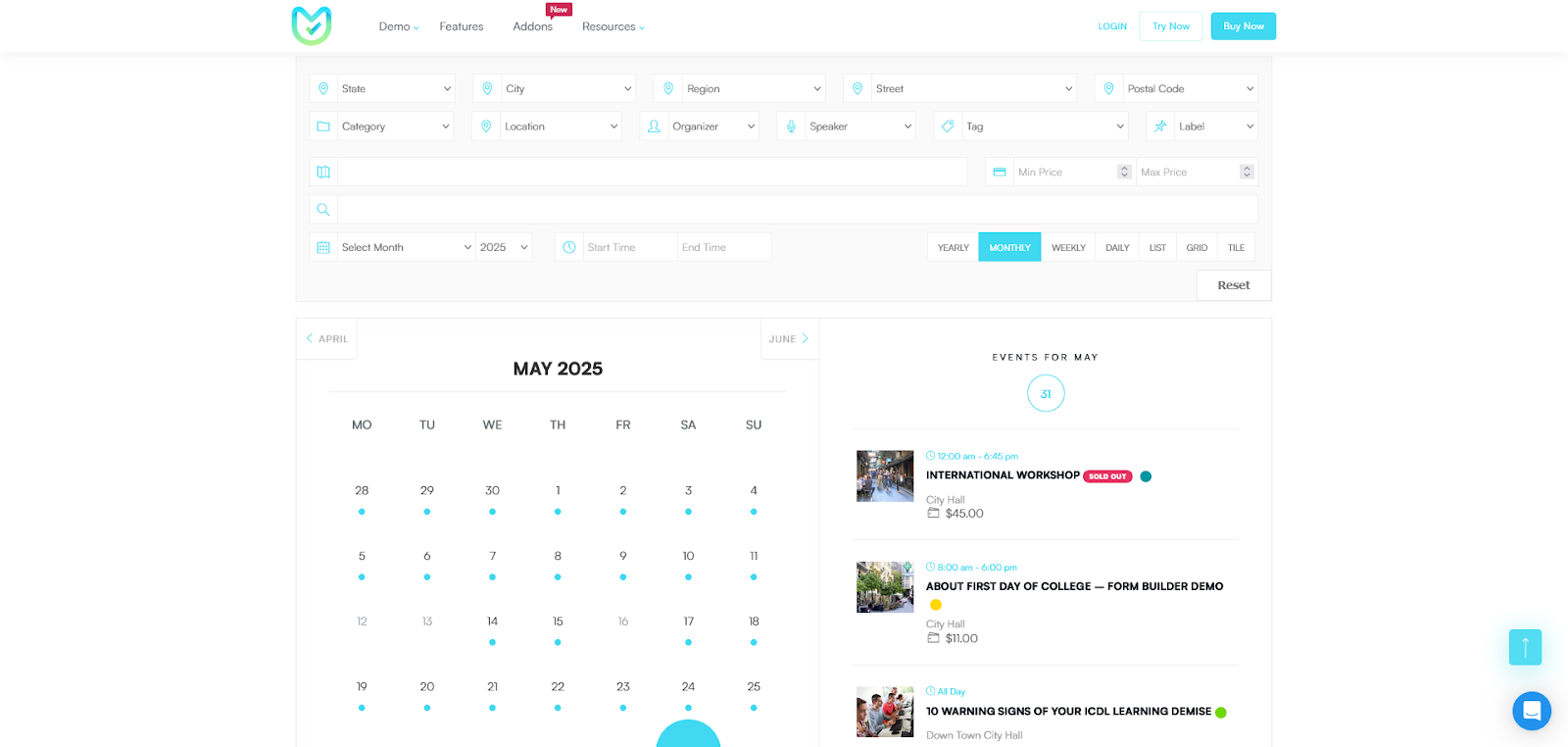
Tools like Modern Events Calendar (MEC) exist to simplify this journey.
Think automated registration, real-time scheduling, and integrated payment systems—allowing you to focus on strategy, not spreadsheets.
Whether you’re hosting 50 or 500 attendees, the right approach turns “What have I gotten into?” into “I’ve got this.“
Key Takeaways
Step 1: Define Your Conference Goals and Target Audience
Your conference’s success hinges on two factors: crystal-clear goals and a deeply understood audience.
Start by defining the core purpose. Is it primarily for education (skill-building workshops), networking (industry connections), brand awareness, or lead generation?
Transform vague intentions into measurable targets like “Attract 200 healthcare executives with 85% reporting new industry insights.”
Understanding event ROI KPIs is crucial for measuring success. Learn how to track key metrics in Event ROI KPIs: Measure Your Event’s Success.
Next, profile your ideal attendee with precision.
Use surveys, LinkedIn analytics, or past event data to validate assumptions—never guess. First-timers often skip this, risking misaligned content and empty seats.
The Modern Events Calendar RSVP addon also lets you ask attendees these important questions before the events start to help you navigate your plan more effectively.
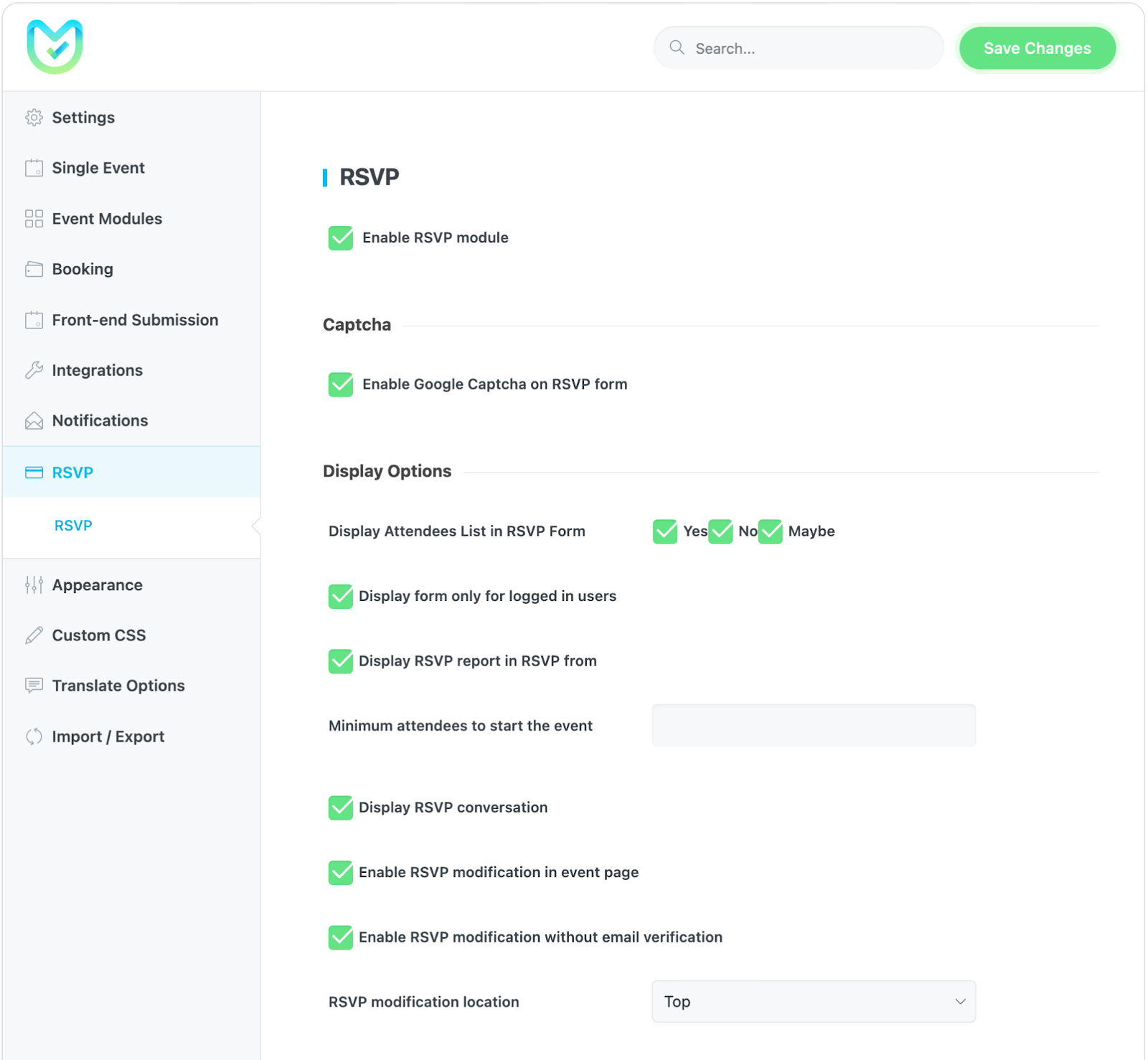
With this foundation, tailor every decision:
Nail this step, and speaker management and venue selection become purpose-driven, not guesswork.
Step 2: Set a Realistic Budget
Your budget isn’t just numbers—it’s your event’s guardrails against chaos.
First-time organizers often underestimate costs, risking last-minute cuts or debt.
Break expenses into core categories:
| Cost Category | % of Budget | Details |
| Venue & Logistics | 30–50% | Rental, insurance, Wi-Fi, signage |
| Food & Beverage | 15–20% | Breaks, lunches, dietary accommodations |
| AV & Tech | 10–15% | Mics, screens, livestreaming |
| Speakers | 5–15% | Honorariums, travel, hotels |
| Marketing | 10–15% | Ads, design, swag, event ticketing software fees |
| Contingency | 10% | Non-negotiable buffer for surprises |
Remember: A realistic budget isn’t restrictive—it empowers you to allocate resources where they’ll impact attendees most.
The result? More budget for attendee experiences and fewer spreadsheet headaches.
Step 3: Choose the Right Venue
Your venue isn’t just a location—it’s the cornerstone of the attendee experience.
Prioritize accessibility: Is it near transit/hotels? Does it offer ADA-compliant access, lactation rooms, and safe parking?
Test Wi-Fi speeds onsite—attendees won’t forgive spotty connectivity.
Ensure capacity aligns with your goals (aim for 80% room occupancy to avoid overcrowding) and offers flexible breakout spaces (1 per 75 attendees).
But can this get any less difficult? The answer is yes!
Modern Events Calendar offers map and location modules to help attendees find venues more easily.
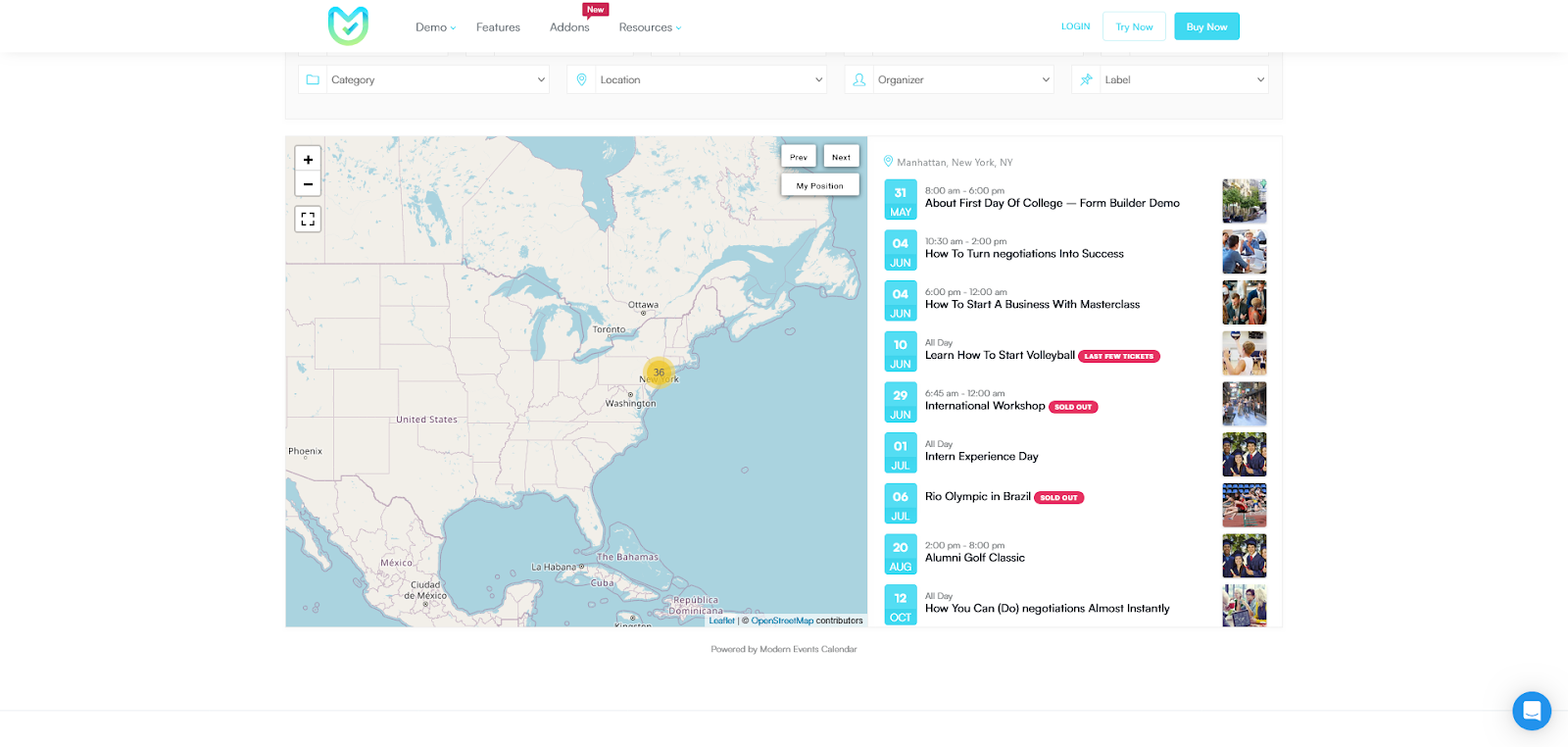
In addition, MEC Seats addon adds a customizable layout of your event seats, where users can book their favorite seat according to their budget and preference.
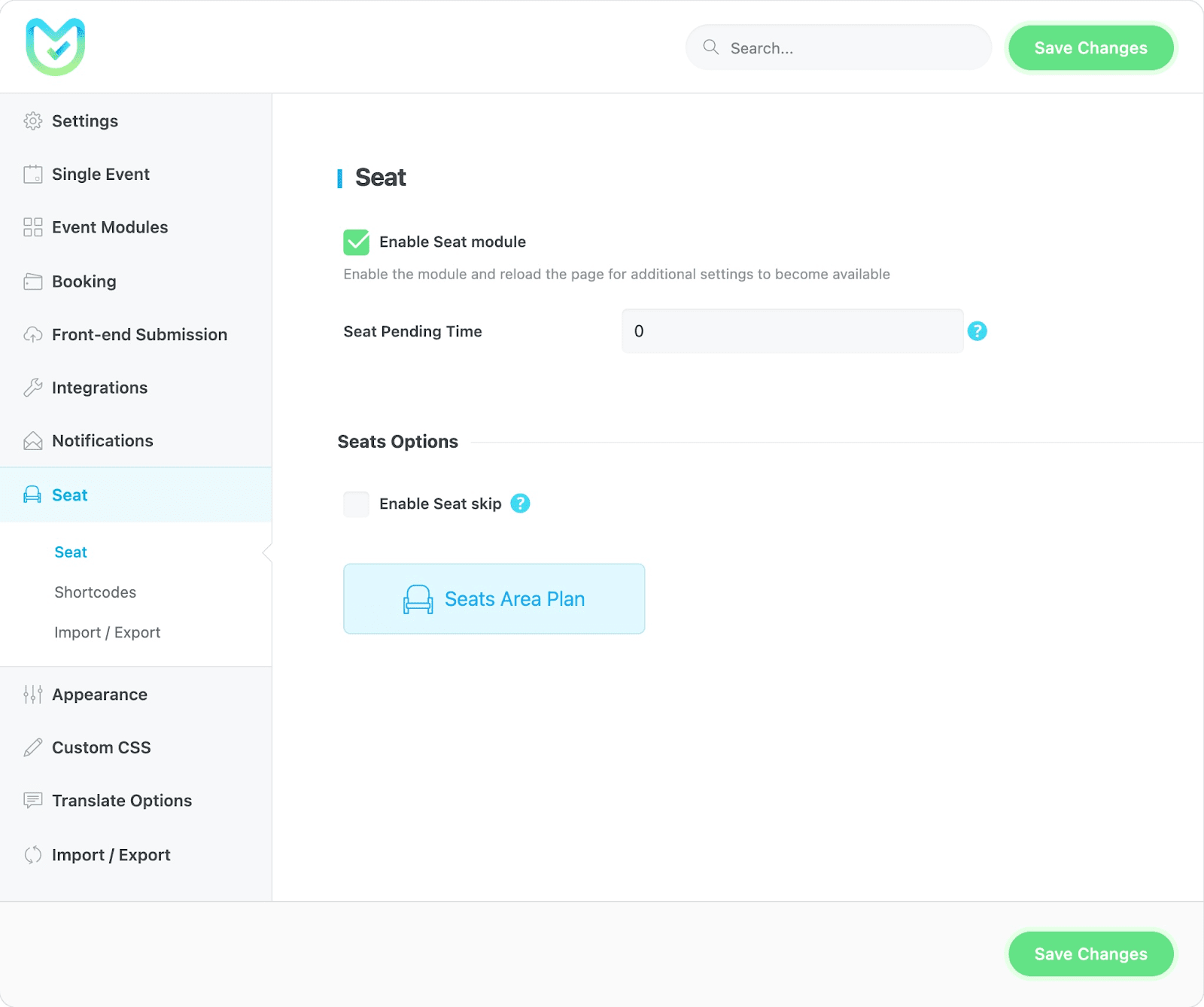
Pro Tip: Visit venues at your event’s exact time slot—lighting and noise levels change drastically, and never sacrifice attendee comfort for aesthetics.
Step 4: Create a Conference Schedule and Book Speakers
Your agenda is the heartbeat of the conference—pacing and speaker quality make or break the attendee experience.
Aim for intentional variety—for example, a visionary keynote at 9:00 AM, followed by a networking coffee break, then concurrent breakout choices before lunch.
When reaching out, personalize invitations by explaining why their voice matters to your attendees.
Critical first-timer insights: Always build 15-minute buffers between sessions for delays or conversations.
Now let’s see how to implement all that into your website:
You can dedicate a whole page to speaker details where your attendees can click on each speaker and learn about them using the Advanced Speaker addon or showcase the speaker details on the sidebar using MEC Lite/Pro itself.
This way you can build up trust and have your audience connect with speakers well before events start.
Step 5: Set Up Registration and Ticketing
Your registration system is the gateway to your event—clunky experiences deter attendees before day one.
Start with strategic pricing: tiered options like early-bird discounts (drive urgency), group rates (encourage team attendance), and VIP passes (exclusive access) maximize revenue while catering to different budgets.
Always test price sensitivity with peers—aim for 20-30% profit margins after costs.
Next, design a frictionless registration flow. Here’s a list of the most critical factors:
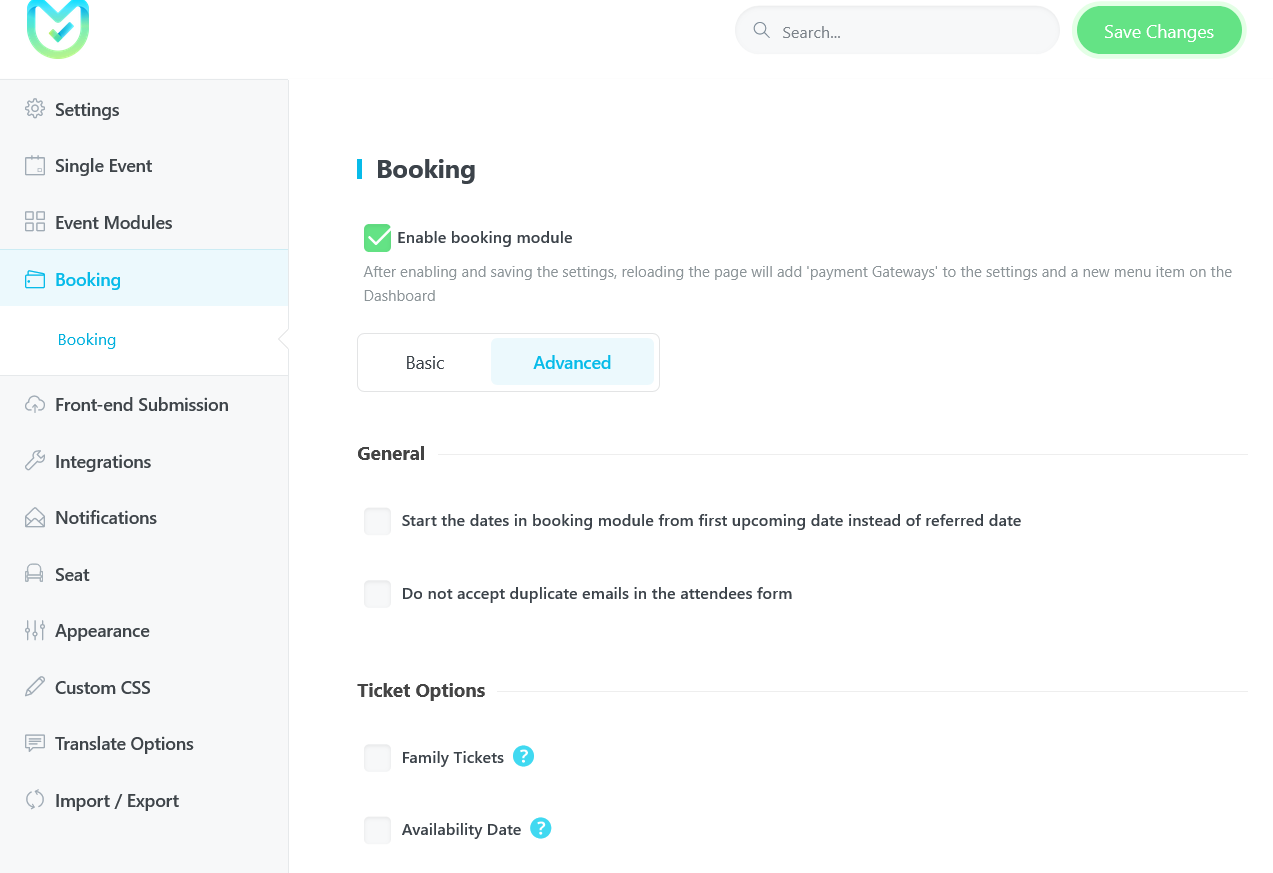
Modern Events Calendar checks out all these boxes by offering booking forms to collect essential info, guest vs member booking, optional ticket variations, optional booking simplification and customizable booking steps and responsive menus to make sure no stone will be left unturned for maximum conversion.
Leveraging event management software effectively can streamline operations, from attendee registration to post-event analytics, ensuring a seamless experience for both organizers and participants.
Step 6: Promote the Conference Effectively
Start by making your event landing page the campaign headquarters, as this single page must convert visitors into attendees:
Highlight the most critical event info and pick eye-catching event titles (“Learn AI strategies that save 20+ hours monthly”), and embed frictionless registration.
Avoid cluttered designs—use high-impact visuals and urgency builders like event countdowns.
Diversify outreach across four key channels:
Social media plays a vital role in event promotion. Discover The Power of UGC (User-Generated Content) in Event Marketing to maximize engagement.
Modern Events Calendar offers all these features as an all-in-one promotion tool.
You can choose from 30+ premade event layouts or create your own with powerful page builders to highlight key features and create attractive designs.
There is even a dedicated countdown view for building a sense of urgency.
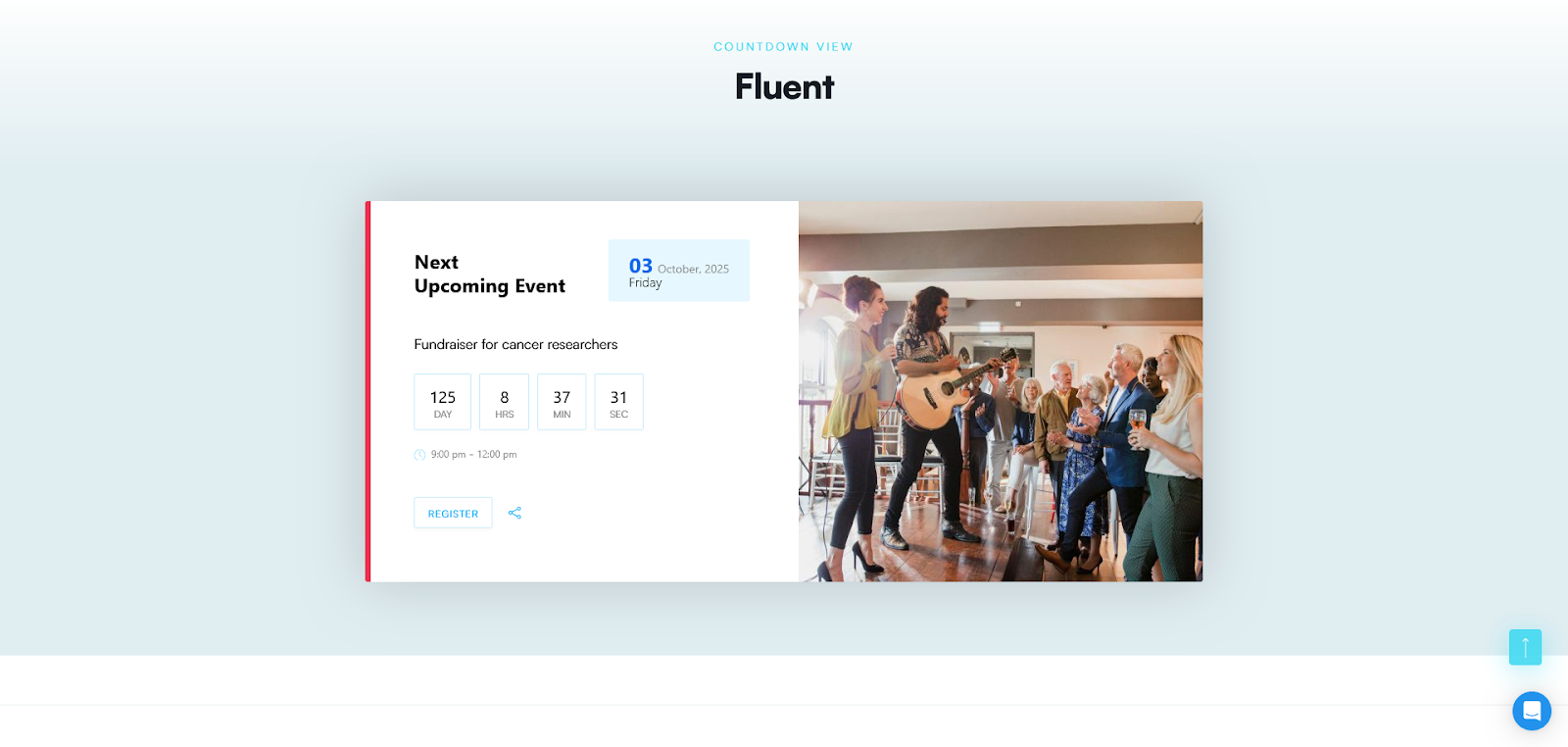
MEC’s email notifications and RSVP tools keep you in touch with your audience and its Social Auto Poster addon can create engaging social media posts across the most popular platforms automatically
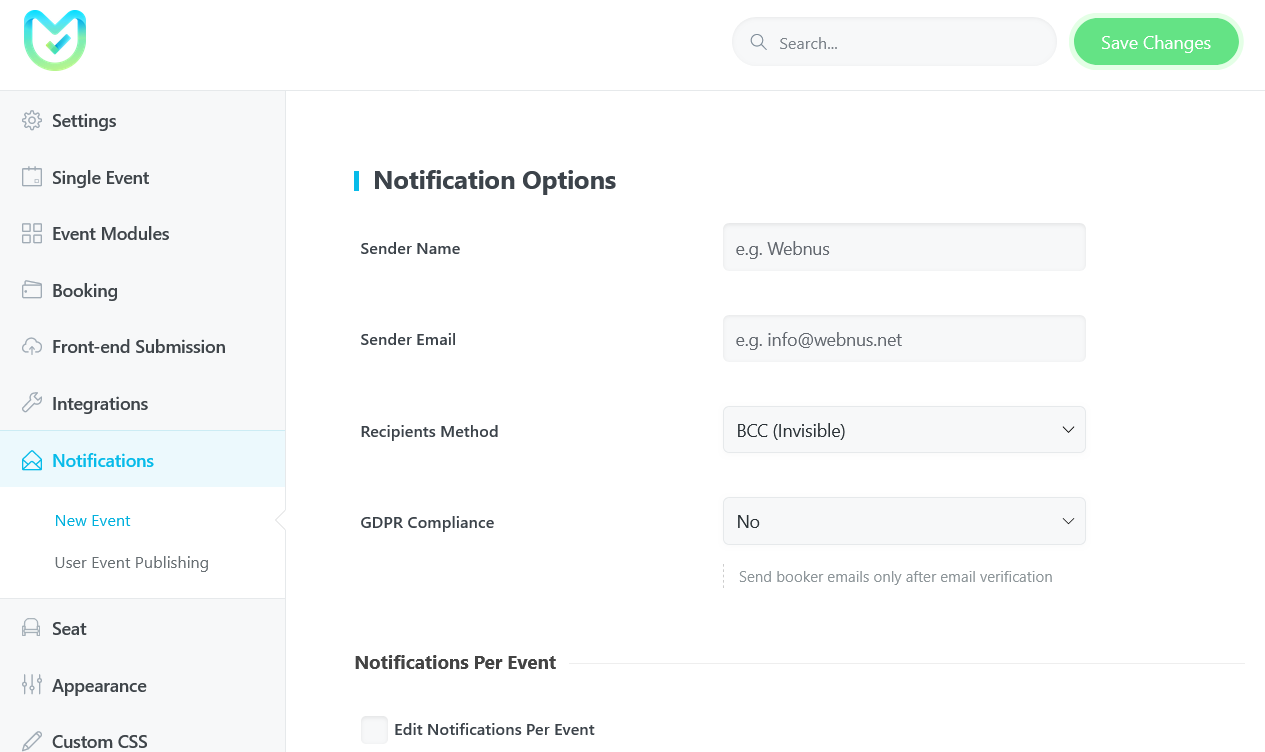
Step 7: Prepare On-Site & Post-Event Operations
Streamline arrival chaos with military precision. Assign trained volunteers to registration desks armed with tablets running real-time check-in tools.
Use QR code scanners (like MEC’s integrated system) to validate tickets in seconds—no paper lists. Brief staff on emergency protocols and Wi-Fi passwords.
Test all AV equipment 48 hours early, and prep speaker green rooms with water, scripts, and contact sheets.
Within 24 hours, send heartfelt thank-you emails to attendees, speakers, and sponsors—include a feedback survey link.
For seamless check-in, leverage Modern Events Calendar (MEC)’s Ticket and Invoice addon with QR code validation.

Organizers scan tickets instantly via MEC’s ticket apps available for android and IOS devices, eliminating paper lists and long queues.
After the event is over you can use the MEC Auto Email feature and MailChimp integration to send out emails to keep in touch with your audience and get their feedback
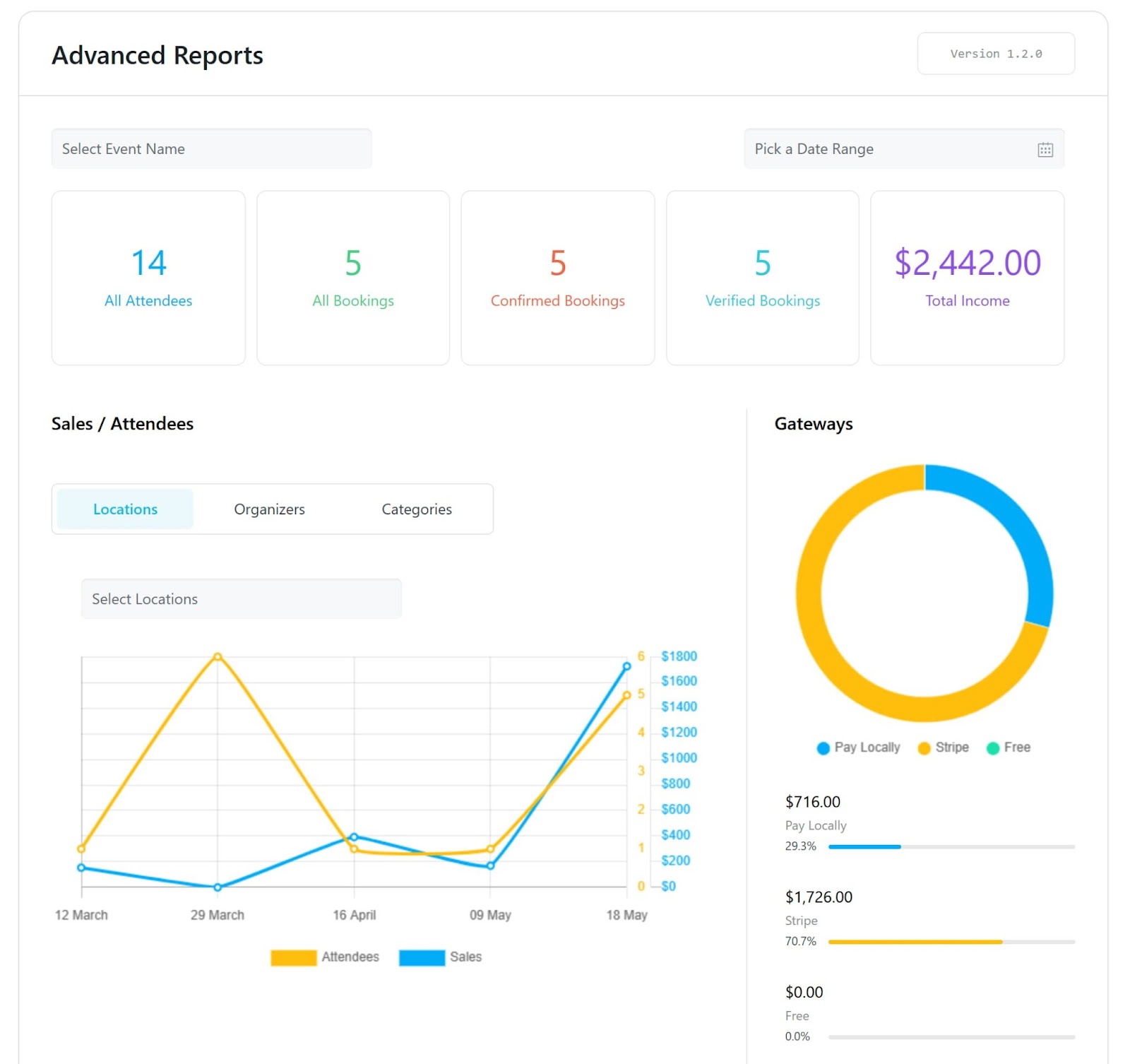
Also, MEC’s Advanced Reports addon transforms raw data into strategic insights—automatically generating visual dashboards showing attendance, revenue, and other ROI metrics.
Export financial summaries in one click for stakeholder reviews.
In addition, MEC’s multiple payment integrations (PayPal, Stripe, offline bank transfers) offer comfort and trust for your audience.
Conclusion: Your Conference Success Blueprint
Planning your first conference may feel daunting, but remember: every expert organizer once stood where you are today.
This 7-step framework transforms overwhelming logistics into manageable milestones—from defining measurable goals to analyzing post-event ROI.
By anchoring decisions to your audience’s needs and embracing tools like Modern Events Calendar (MEC), you turn potential pitfalls into triumphs.
MEC streamlines your entire journey:
Ready to transform conference chaos into your career’s proudest achievement? Launch your first event with confidence using Modern Events Calendar today.

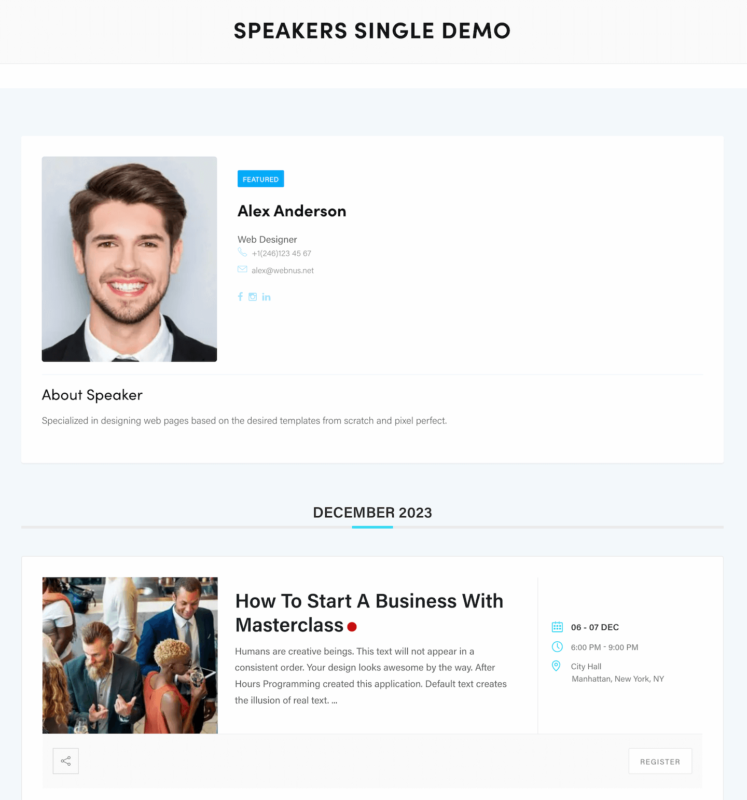
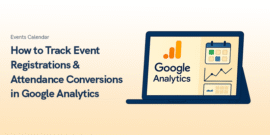
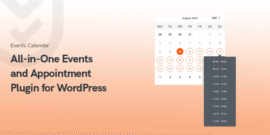

This blog never disappoints.